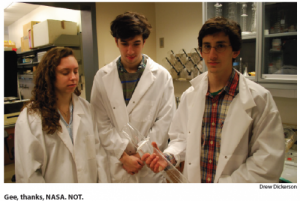According to Brown’s Department of Neuroscience, professors just realized that they have been studying the brains of monkeys this whole time.

Professor Emeritus Greg Harrison said that he thought the misunderstanding started about 30 years ago, when early neuroscientists used monkey brains because they are evolutionarily similar to humans, but apparently they forgot to tell their peers that the studies were conducted on monkeys.
“A brain really just looks like a brain, you know?” Harrison said. “When you’re looking at this gooey thing, it’s easy not to notice the fur on the scalp that you just cut open.”
Harrison said the entire field of neuroscience will likely have to be trashed and started over, but that the field of monkey neuroscience has grown rapidly in the past few hours.
“We now know that monkeys are very complex, intelligent and emotional creatures, whose natures are at a tendentious equilibrium between logic and affect, with highly evolved prefrontal cortexes, competing hemispheres and constantly adapting networks of billions of neurons,” Harrison said. “And we’re pretty sure that humans have a brain of some sort too.”
Paul Harvey, professor of neuroscience at Harvard University, said he was actually relieved to hear that it was only monkeys they were doing this stuff to all along.
“It makes a lot more sense now why there were no lawsuits or anything about cutting all these people open, among other things,” Harvey said. “I’ve been feeling really guilty about cutting all these people open, so I was thrilled when I heard that they were only monkeys. Now we’ll have to start cutting all these people open, though.”
Harvey said this news also explained the findings from a study he conducted earlier this year that found that the act of observing a person’s brain turned them into a monkey.
“But this explanation makes way more sense,” Harvey said.
